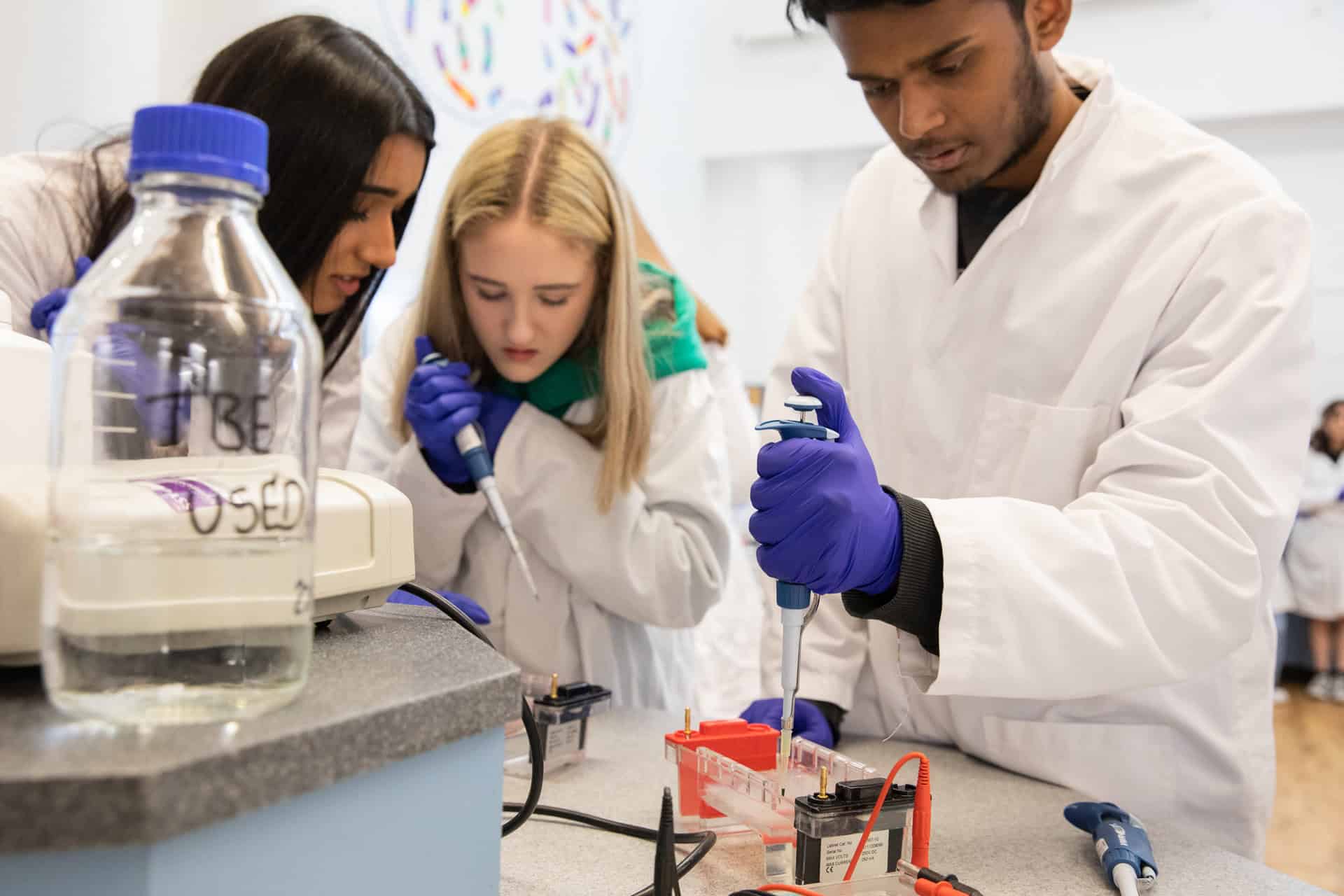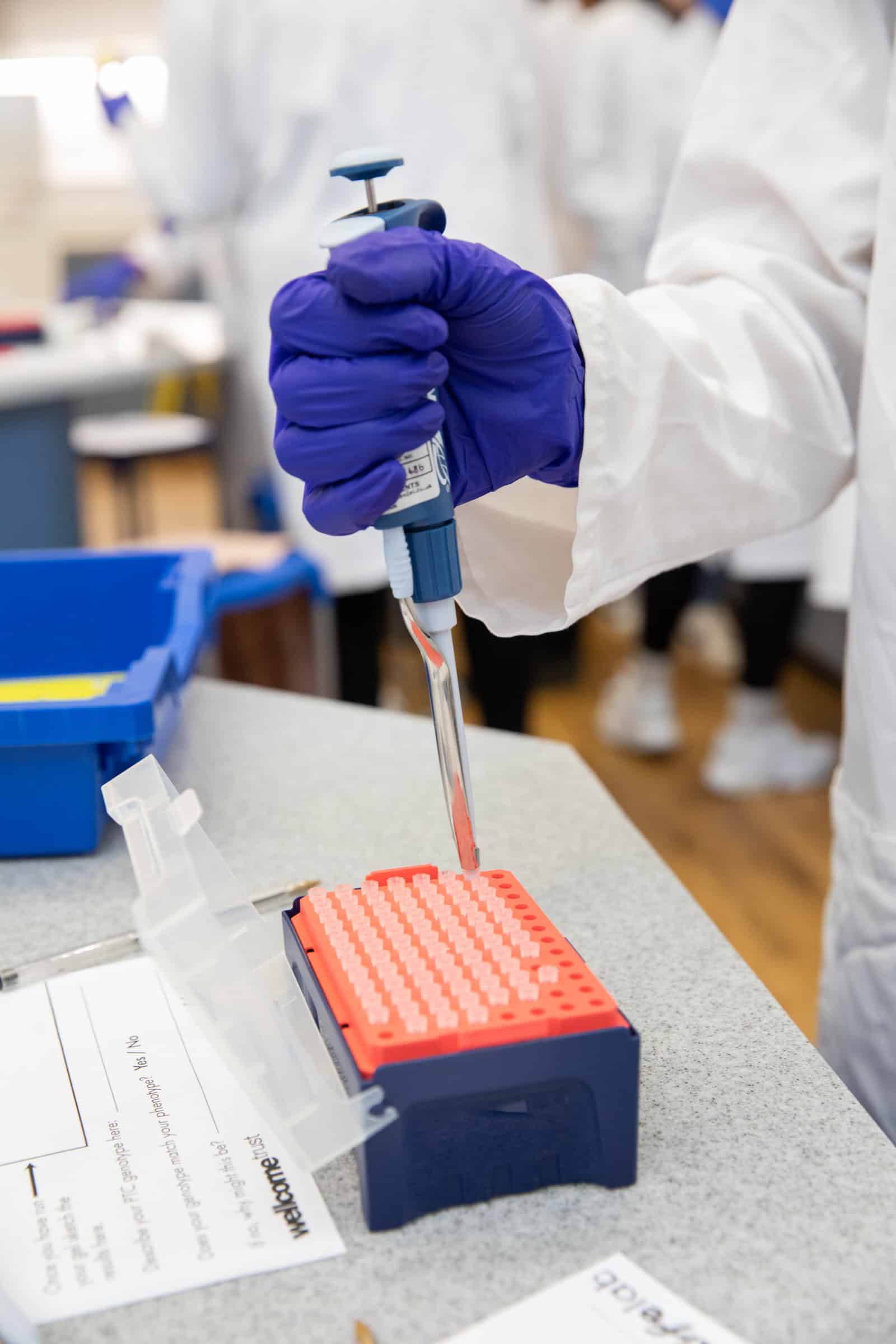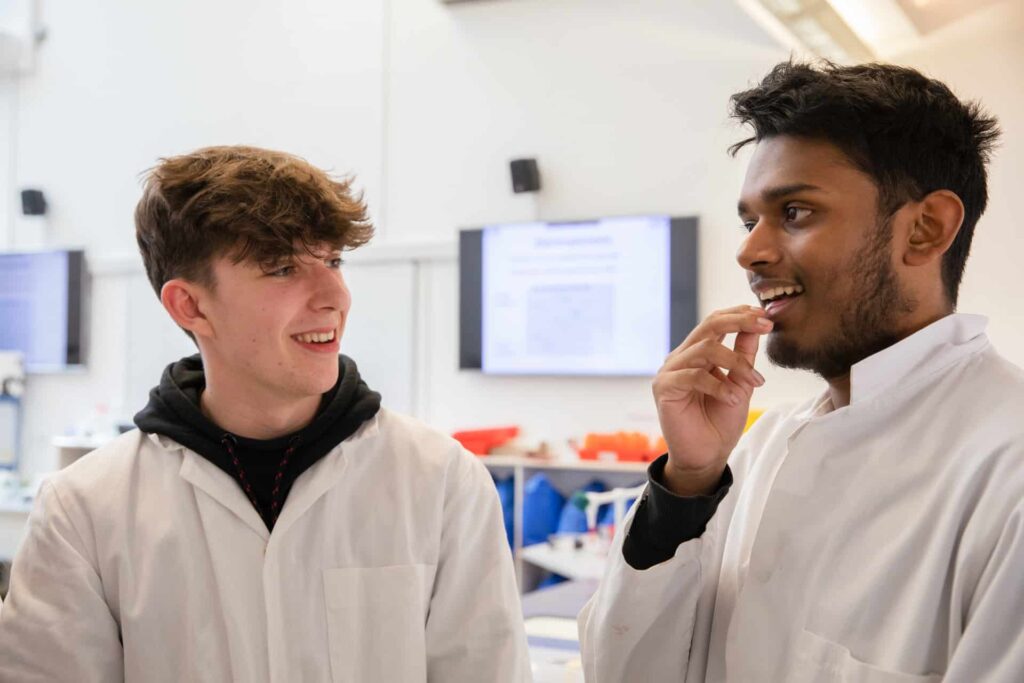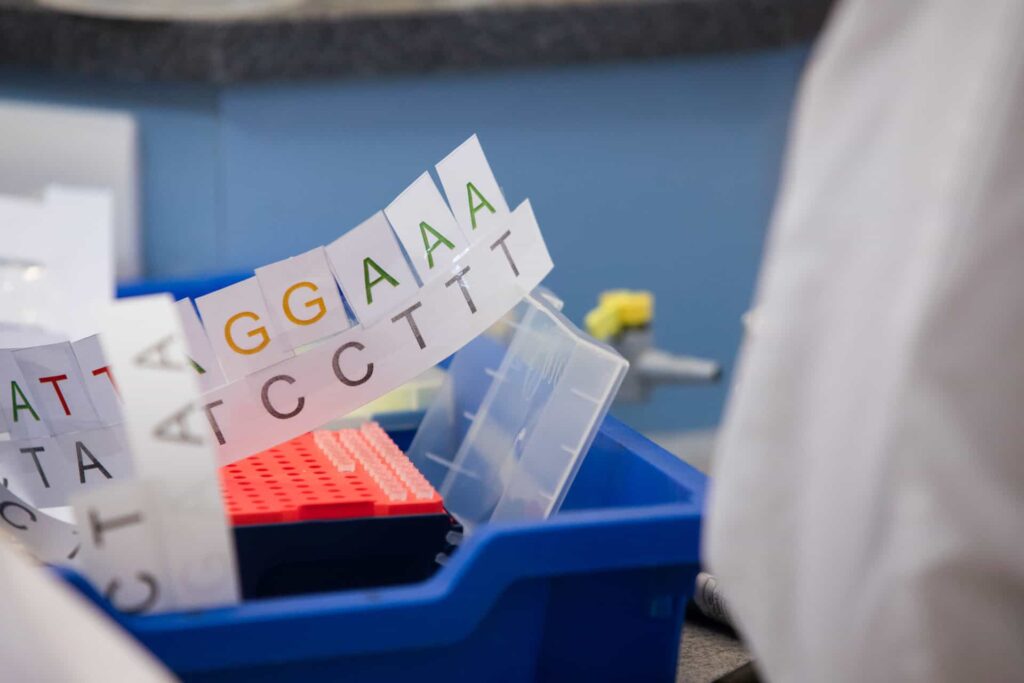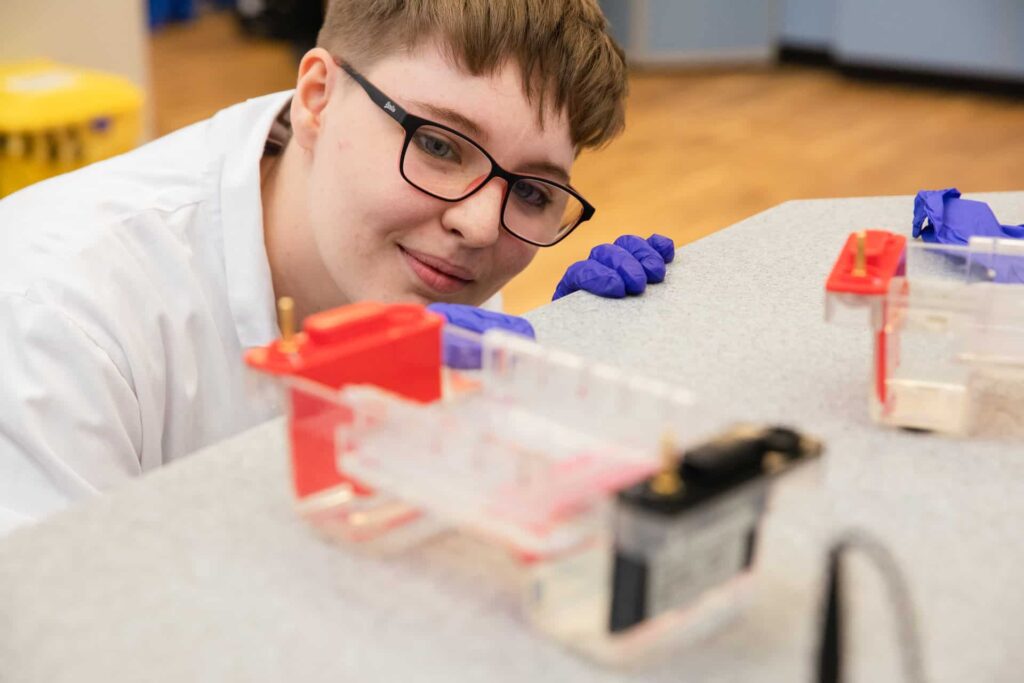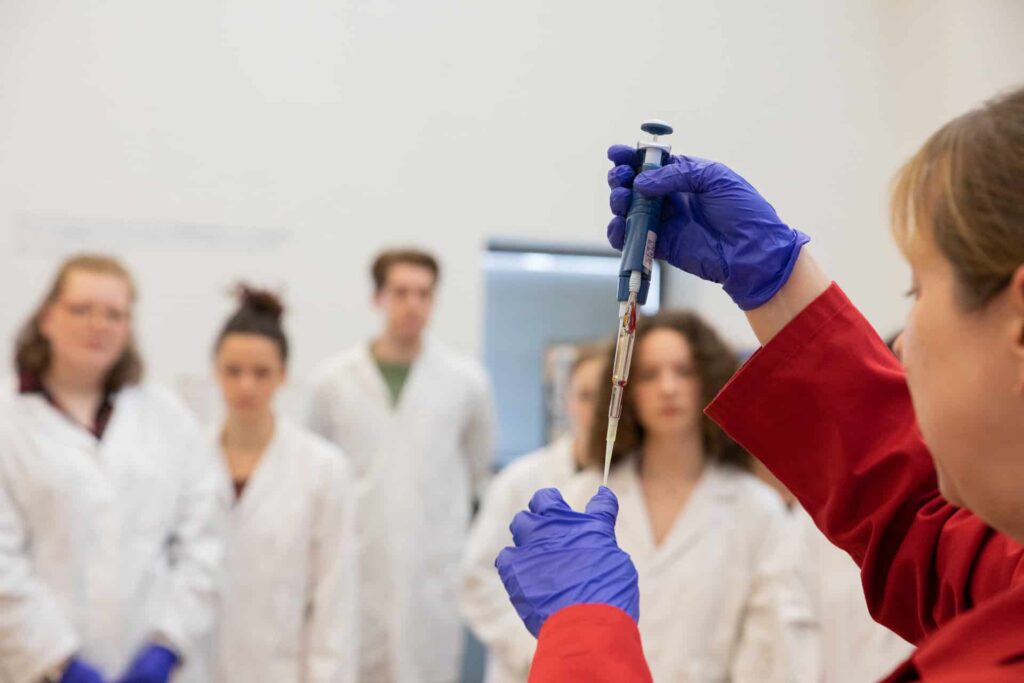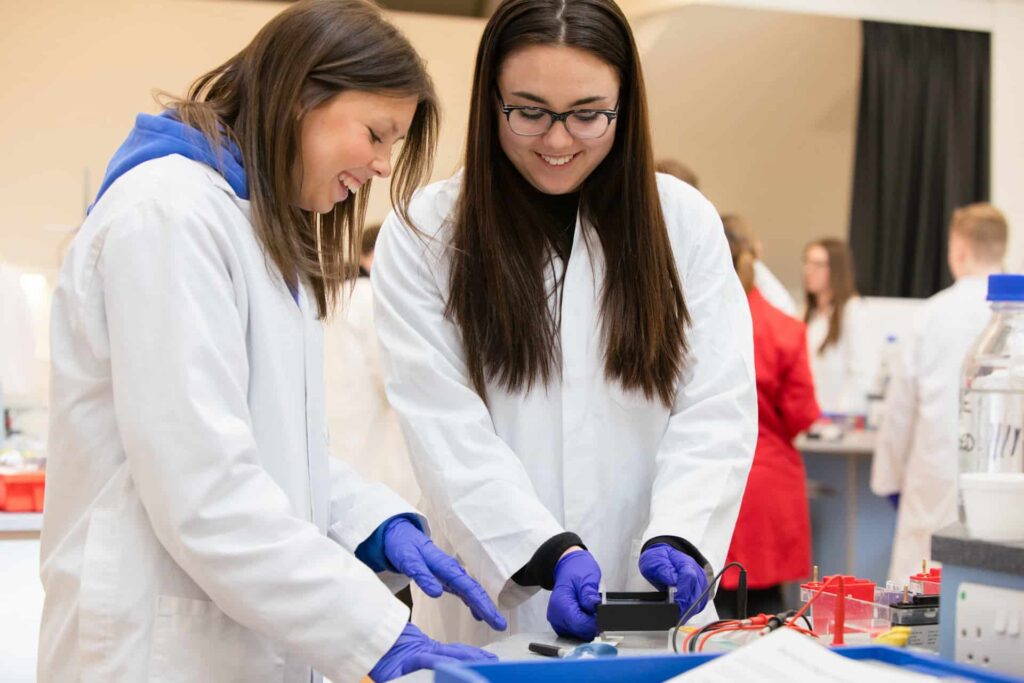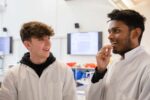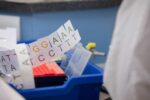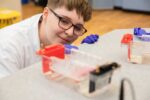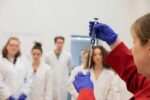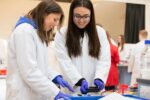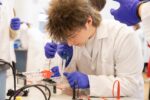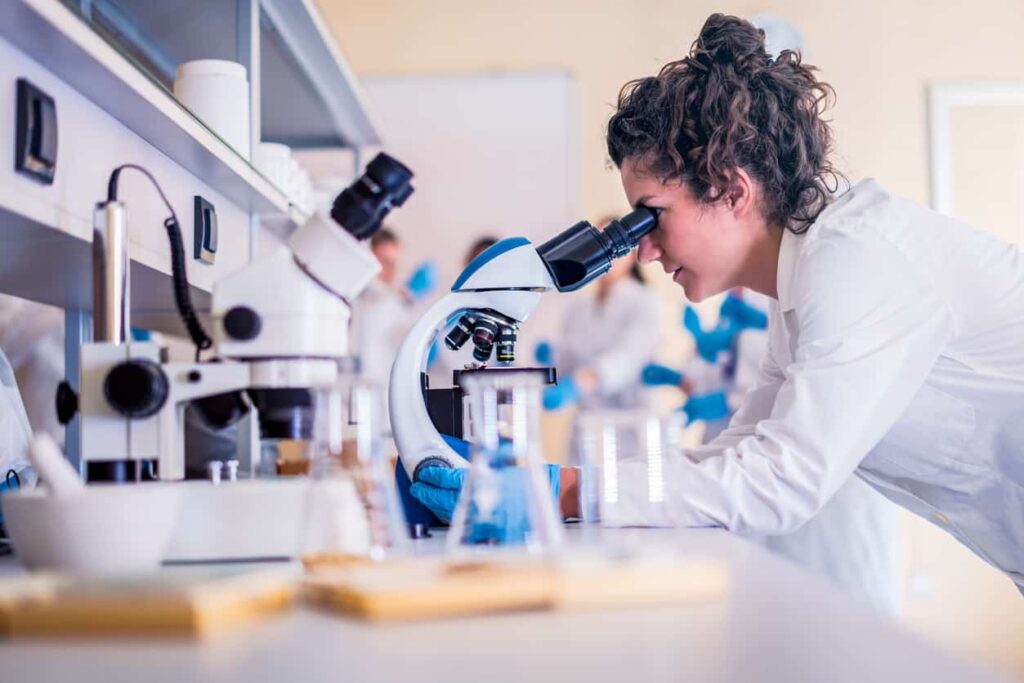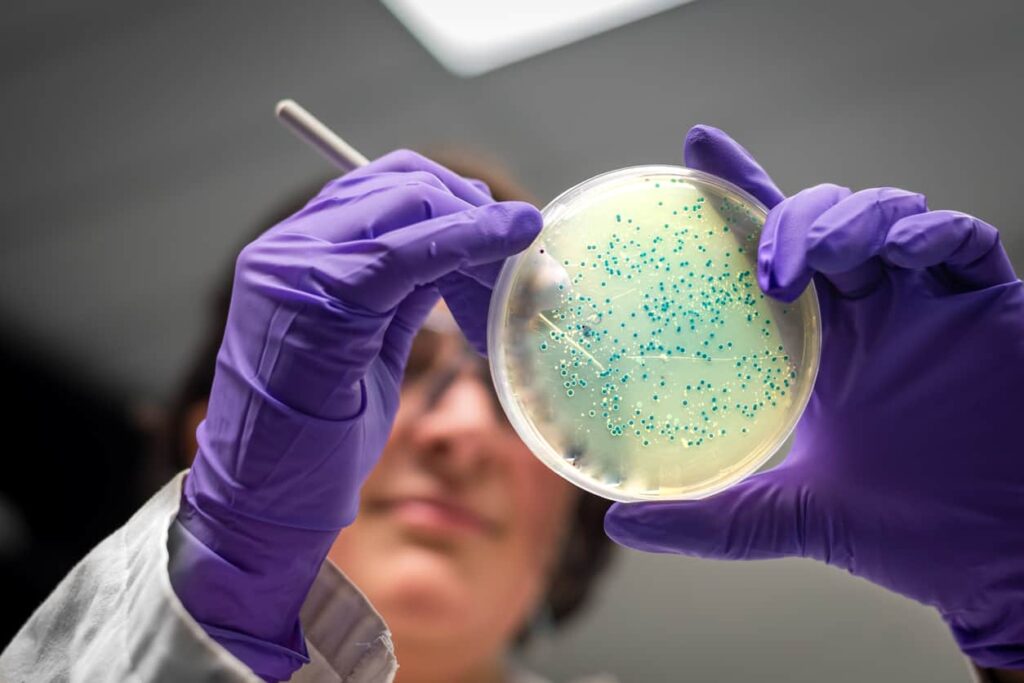Using their own DNA, students will discover and compare their version of a bitter taste receptor gene.
Students will explore how different genetic variants evolve in populations and consider a case of convergent evolution.
Using their own DNA students will discover and compare their version of a bitter taste receptor gene (their genotype) to their ability to taste the bitter compound (their phenotype).
In our specially equipped laboratory students will carry out modern molecular biology techniques including; DNA extraction, micropipetting, polymerase chain reaction (PCR), restriction enzyme digest, and gel electrophoresis.
Curriculum links
Key stage 4 and post-16
Biology
- AS/A Level Biology and BTEC Applied Science
- Biological molecules
- DNA, genes and chromosomes
- Genetics and evolution
- Practical skills in biology
School trip prices
Please note: our school workshop prices change slightly from 1 September 2025.
Teachers and adult helpers go FREE!
Workshop only
£250
(full class up to 24)
£125
(half class up to 12)
Inside our PCR workshop...
What other teachers say...
“This workshop is brilliant! The lady I dealt with (at booking) was incredibly helpful and clear with their instructions”
Durham School
“This is an excellent course and by far the best way of delivering this part of the specification.”
St Mary’s Catholic School
